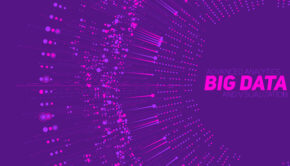Human Resources Analytics
The process of collection and analysis of data regarding Human resources and workforce to enhance company and its HR department performance and day to day work is called HR analytics or workforce analytics. With analytics, the routine HR data can be collected and correlated with HR and company goals. This can help in analyzing how HR and its activities are affecting the organization and its objectives. Using analytics, any dearth in resources, lower performance, attrition reason, and more can be identified and rectified. The HR and company leaders can make data-driven decisions to make day to day improvements and overall strategy changes. They can know what is working well and what is not and rectify it. For example, it will be a real actionable insight for any HR leader to know the reasons for high turnover and how to resolve the issue to improve productivity and revenue.

Importance of Workforce Analytics
With a huge amount of data being collected by every organization and HR every day, it goes to waste if not used properly, given that this data is simply numbers and provides no insights in its raw form. Companies can analyze this data with HR analytics tool and generate actionable insights that can answer many questions like what are the reasons for high turnover, is there a pattern in this turnover, what is the average time for hiring, what is the average cost of training and development to make any employee productive, what are the top reasons of low performance, and many more.
These insights help to take the guesswork out of decisions and bring data-driven decision making in action.
Predictive HR Analytics
Predictive HR analytics is the use of machine learning and data science to analyze historic and forward-looking data to generate predictive insights. In normal business intelligence, people can analyze the data to know the past insights or real-time insights but in predictive analytics, leaders can get futuristic insights. Leaders can know the potential employees at risk, candidates with a higher possibility of succeeding in the company, and much more.
In this predictive analytics, algorithmic models are created using advanced statistical techniques. This can help identify trends and patterns. This can also help discover new opportunities and risks and make strategies based on it.
Predictive HR Analytics Examples
For example, using these advanced analytics, leaders can know the potential employees and the number of employees who are prone to attrition in given time duration. This empowers the managers to step in at the right time and resolve the issue with these employees and prevent performance or productivity loss and saving the future recruitment cost.
Another great example of the application of machine learning can be understanding and predicting organizational and individual performance. Leaders can know the top reasons for low performance and tendency to any further depreciation in the performance of an individual or a team. Engagement and performance can be correlated to know which engagement activities are enhancing performance and which activities can be eliminated. They are also looking for new ways to generate engagement and improve performance.

Benefits and challenges of Machine Learning
Till now all the analytics give an only a historic view of the data, with predictive and what-if analytics, the managers can know and test various hypotheses and make forward-looking strategies. Till now the approach was reactive but data science gives the power of a proactive approach to the companies and its leaders. They can look at potential future issues and rectify things before they hamper the process. This enables reducing efforts, improving ROI, and optimizing revenue.
Predictive analytics being advanced technology usually needs high-level skills and the right people to derive the insights. There could be many factors affecting a specific dependent variable, and to make accurate predictions all the factors must be taken into consideration without forgetting the fact that every human is different, and it takes careful analysis to generate the right insights. However, this problem can be easily solved with the new age self-service analytics software enabling people to generate predictive insights without the need of IT personnel.
Conclusion
As the organizations and their expectations keep growing, to keep track of the data has definitely become a priority. HR is the core department influencing the overall organization and employee performance certainly needs the power of data analytics to not just maintain but improve the operations. With many organizations inculcating BI and analytics in their day to day work, it will become furthermore critical to invest in analytics to stay ahead of the competition and optimize each resource.
















